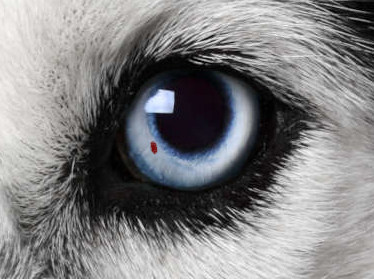
Inflammation or hemorrhage
When a dog has pink-red spots on its eye, it is usually due to inflammation or hemorrhage. Conditions that cause inflammation are varied but may include:
- entropion – the eyelid turns inward and irritates your dog’s cornea
- foreign body – a grass awn, piece of sand or dust, or other particle can get trapped in your dog’s eyelid and irritate the corneal surface
- injury – an injury to the eye can cause capillary rupture and blood pooling
- allergic reaction to an environmental or food trigger
- ruptured capillary – sometimes blood vessels in the eye rupture and cause blood pooling without an identifiable trigger
Treatments: When inflammation or hemorrhage is the cause of your dog’s red eye spots, your veterinarian will treat any underlying conditions, if possible.
Pooling caused by ruptured capillaries usually resolves in a week or so without treatment.
Your veterinarian will prescribe topical antibiotics and anti-inflammatory eye drops to treat inflammation. He may also recommend using an eye wash to flush irritants from the eye gently.
Minor irritation may clear up in a few days, but infections and other medical conditions take a week or more of treatment.
Medical conditions causing red spots in dog eyes
Red spots in dog’s eyes can also be caused by underlying medical conditions including:
- Uveitis – inflammation inside the eye(in the iris and ciliary body) caused by bacterial or fungal infections, tick-borne diseases
- Keratitis – corneal inflammation caused by chronic irritation or an autoimmune disease(pannus)
- Glaucoma – fluid and pressure buildup in the eye
- Lymphoma (cancer) in the eye
Disclaimer: This website's content is not a substitute for veterinary care. Always consult with your veterinarian for healthcare decisions. Read More.


Be the first to comment